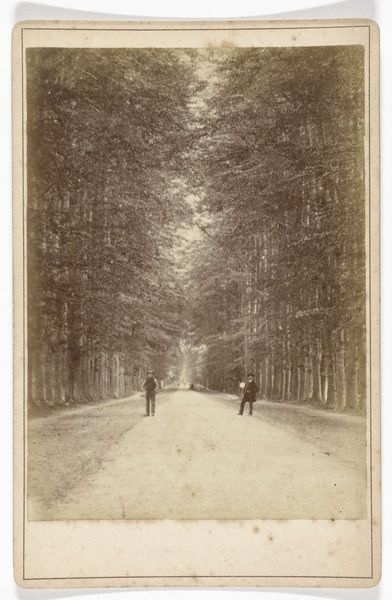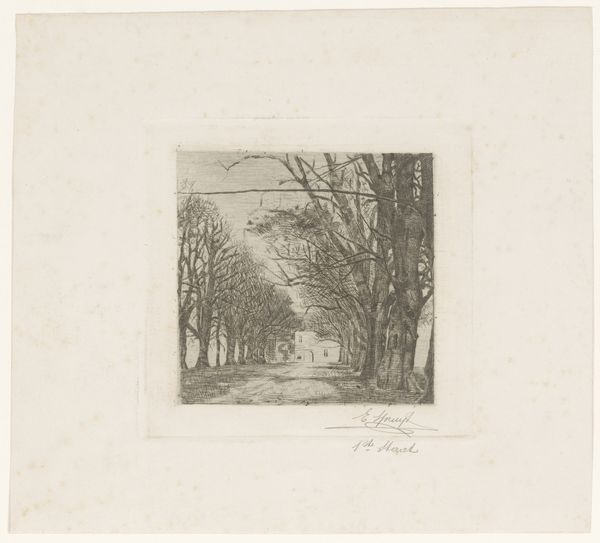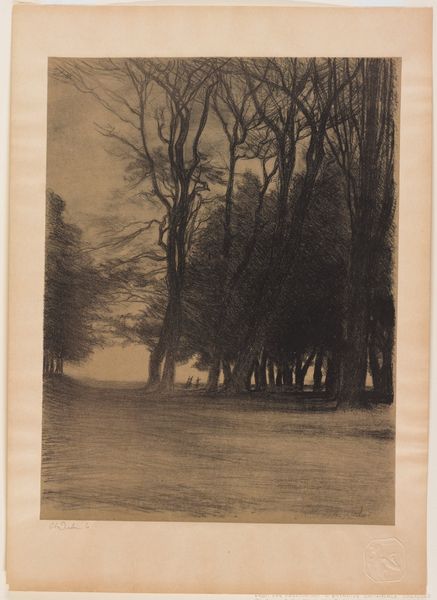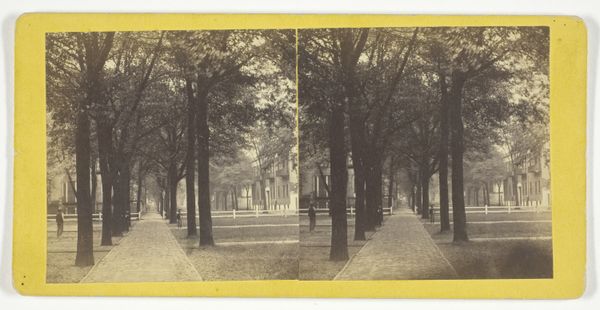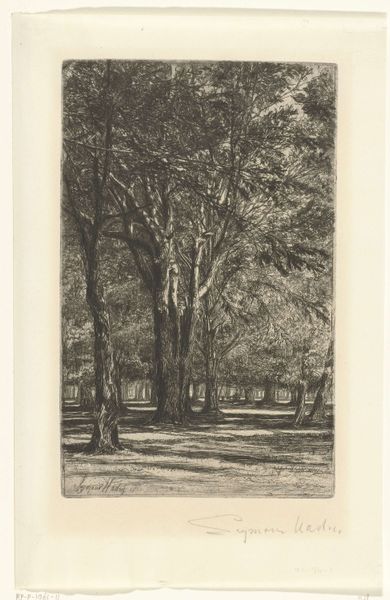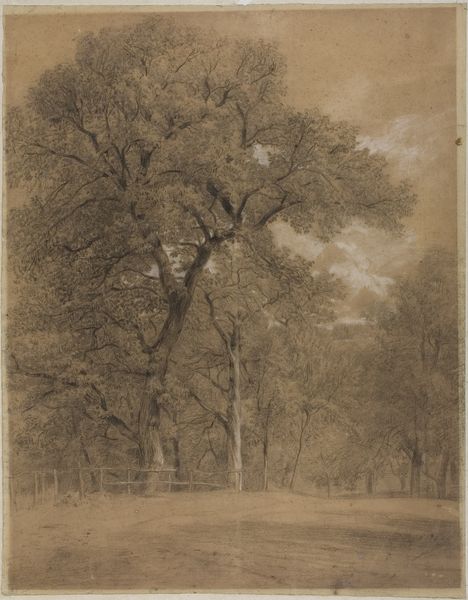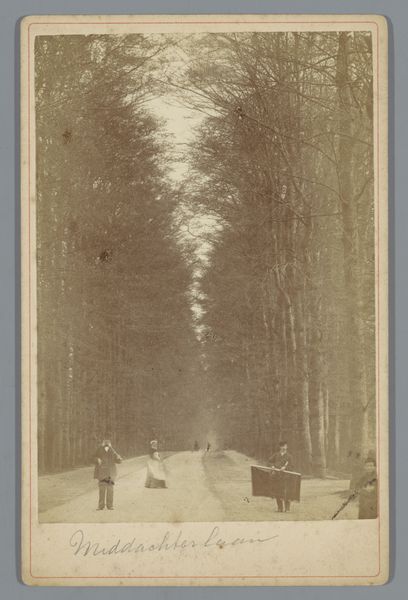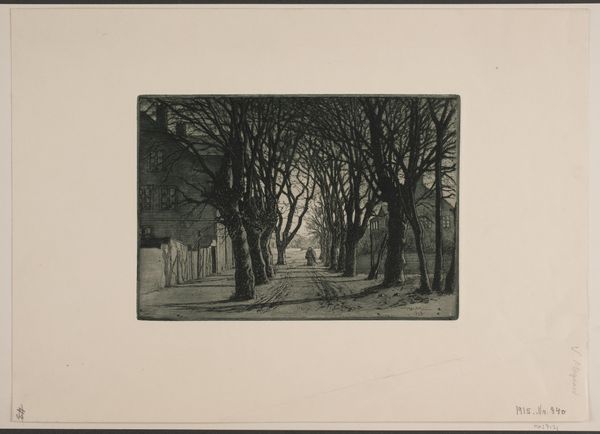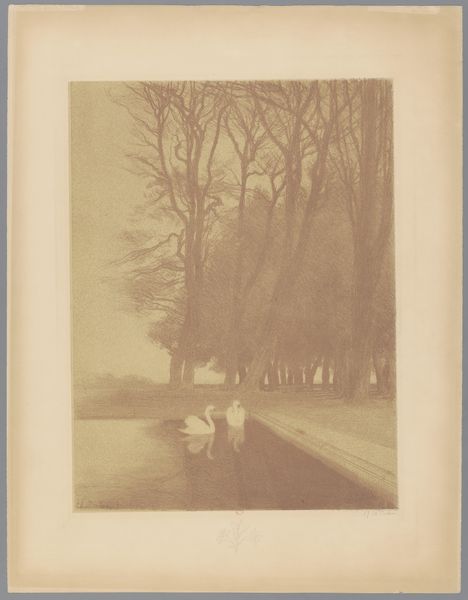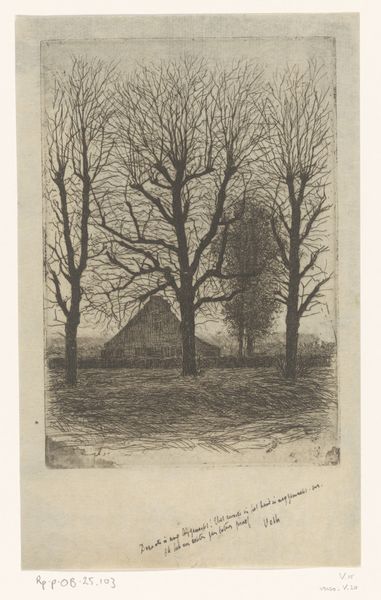
photography
#
landscape
#
street-photography
#
photography
#
realism
Dimensions: 9 × 5.8 cm (image); 10.1 × 6.1 cm (card)
Copyright: Public Domain
Curator: Here we have an intriguing, undated photograph simply titled "Untitled (avenue of trees)." Editor: It’s remarkably subdued; the almost monochromatic palette focuses the eye intensely on the perspective and the figures scattered along the avenue. Curator: Exactly. The photograph, a work of realism, depicts a tree-lined path, probably a park, maybe even a botanical garden. What strikes me is the possible socio-economic element reflected. The workers who planted and maintained those trees, likely laborers of their time, were instrumental in crafting this picturesque setting. Editor: I am struck by the sheer formality. The rigorous arrangement of the trees imposes an almost architectural order, creating a tunnel-like effect guiding the gaze deep into the scene, punctuated by those precisely placed figures. The composition suggests more than just realism; it's about controlling nature. Curator: It certainly speaks to control. Consider, too, the impact of photography as a rapidly evolving technology in capturing and shaping societal narratives, controlling the narrative. Who are these people strolling? Are they beneficiaries of this ordered space? How did they contribute, materially, to make that photograph possible? Editor: Perhaps we can view them as integral compositional elements, heightening the photograph's geometric essence. The lines formed by the branches, converging into a single point, find echoes in their positions. They activate the perspective, creating spatial depth that is both palpable and abstract. Curator: And what about the photographers materials at this point in history? They used specific chemical processes that reflect constraints and access during this period. Early processes weren’t as accessible as they are today so the work becomes not only of landscape and its impact to a new public, but the impact that technological shifts meant for laborers. Editor: Your insight regarding material conditions certainly adds depth, although to me the true artistry resides in the manipulation of light and shadow to create such a compelling, and almost otherworldly depth. Curator: Yes, both. It’s the dialectic between them that truly captures the eye and makes you reflect about it and who it was originally made for. Editor: Indeed. There’s an inherent dichotomy that’s beautifully resonant.
Comments
No comments
Be the first to comment and join the conversation on the ultimate creative platform.

